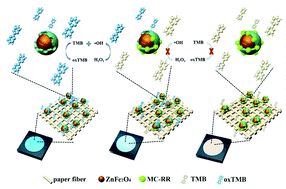A ZnFe2O4-catalyzed segment imprinted polymer on a three-dimensional origami paper-based microfluidic chip for the detection of microcystin†
Abstract
Microcystin has been causing serious environmental pollution; however, the recognition of such compounds is still challenging because of low abundance and coexisting interfering species. In this contribution, we develop a novel microfluidic paper-based colorimetric sensor by exploiting molecular imprinting technology and Fenton reaction for on-site microcystin-RR determination in complex water samples using a smartphone.



 Please wait while we load your content...
Please wait while we load your content...